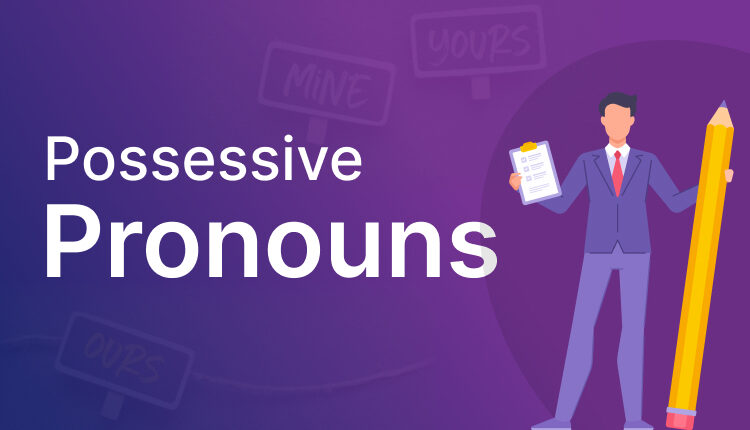Possessive pronouns are one of the cornerstones of the English language. They make it quite easy for you to talk about who owns something or has a special relationship with whom.
Whether you are in need of writing an essay or creating a story, or simply chatting with your friends, learning possessive pronouns will make everything easier in communication.
In this post we will explain what possessive pronouns are, what their meanings and usages are, and also some great examples. We will also make clear the differences between possessive adjectives in order to leave you well-equipped with their use. So let us unravel the world of possessive pronouns together!
What Is a Possessive Pronoun?
A possessive pronoun is a pronoun that indicates ownership or possession. Its main function is to substitute for the noun; therefore, we do not use the same noun more than once in a sentence. For example, instead of writing “the book of John,” we can use “his book.”
These are the pronouns that show whose something is without writing the name of the person. These are mine, yours, his, hers, ours, and theirs.
Using possessive pronouns may make your writing clearer and more concise. They help blur the communication by emphasizing relationships rather than conjuring with another’s name or objects to write. In order to do the language most effective, especially in written and spoken forms, one has to understand what a possessive pronoun is.
Writing Using Possessive Pronouns Correctly
These possessive pronouns help to make your writing brief. They contribute toward making your flow smooth while still relating things correctly with each other involved.
Possessive Pronouns List
There are basic possessive pronouns expressing ownership. It is used instead of the noun and declares to whom something belongs without duplicating the noun itself, thus clearing up and shortening the sentence.
Here are some of the common possessive pronouns: mine, yours, his, hers, its, ours, and theirs. Each of them corresponds to specific subjects or objects and helps convey possession correctly.
For example, instead of referring to “the book that belongs to me” you can use “mine.” Once you learn this list, your understanding of the principles of grammar of English will become much stronger and the writing will be much finer.
Examples of Possessive Pronouns
Possessive pronouns help to denote possession or relationships. For instance, “mine” shows that a thing or property belongs to the speaker. For example, when you say, “This book is mine,” the question of possession is clearly shown.
Another very typical use is “yours,” in the sense of ownership from the speaker’s standpoint. When a friend comes up to you and asks you if a bag is yours and you reply affirmative, it decides whose bag it really is.
Other words like “his,” “hers,” and “theirs” are used for showing ownership about someone else. When you say, “That coat is hers,” it as good as states who the thing belongs to, leaving one unconfused about identity or relationship.
Possessive Pronouns vs. Possessive Adjectives
Possessive pronouns and possessive adjectives show ownership but differ in structure. Possessive pronouns replace nouns, like “mine,” “yours,” or “theirs.”
Possessive adjectives, on the other hand, are adjectives that modify nouns. You use it with every noun that is being described, like using “my,” “your,” or “his.” So, instead of just using a pronoun, you would say “my book.“.
Understanding the difference makes your sentences clearer. It also helps you to be more definitive in asserting what is possessed or the relationship between things and persons.
Sentences With Possessive Pronouns and Possessive Adjectives
Possessive adjectives and possessive pronouns have the same function but are used differently in a sentence. For instance, “This book is mine” uses a possessive pronoun, “mine,” straight to imply ownership. It is a word that can stand alone as a noun.
Compare this with the sentence, “That is my book.” Here “my” is a possessive adjective because it is an adjective that modifies the noun “book.” Possessive adjectives always appear with nouns.
Knowing their different functions helps highlight meaning. Using them correctly clarifies your writing and brings depth. Learning these forms will greatly enhance your ability to communicate more effectively.
Now that you have gained a little bit of knowledge about possessive pronouns, the challenge is in your hands. Here are some exercises to test your skill for this very important grammatical concept.
Fill in the blanks with the correct possessive pronoun:
- “This book is ____ .”
- Choose the right word: “Is this ____ (they) or yours?
- Determine whether the following sentence contains a correct possessive pronoun: The bike is hers.
Share your answers in the comments below. You can use them to build on what you’ve learned, and perhaps someone in your fellow readers will also have navigated their way through a very personal language journey. Knowing how to use possessive pronouns adds richness to both written and spoken communication when trying to describe who owns something or in which relationship two people stand vis-a-vis objects. Practice makes perfect, as they say!

